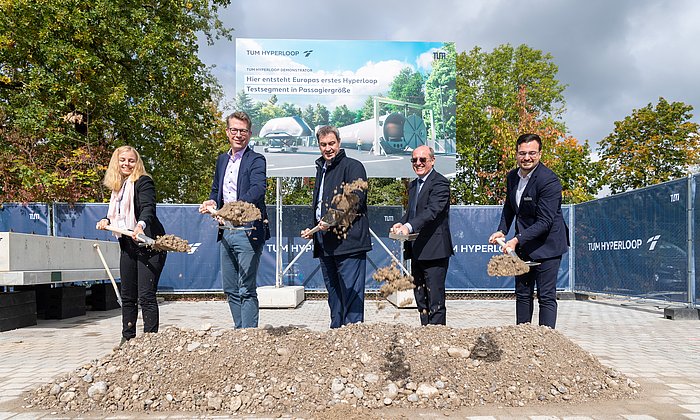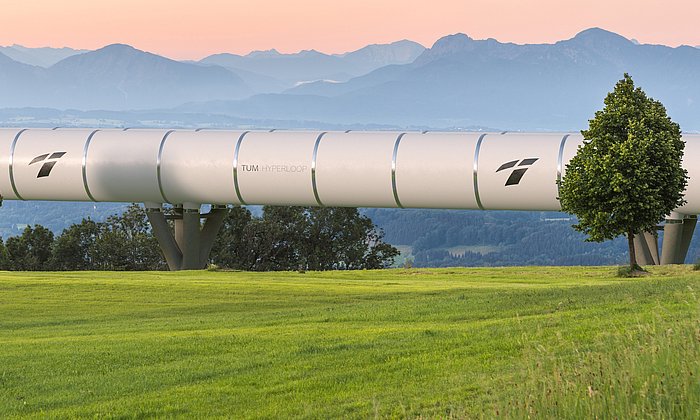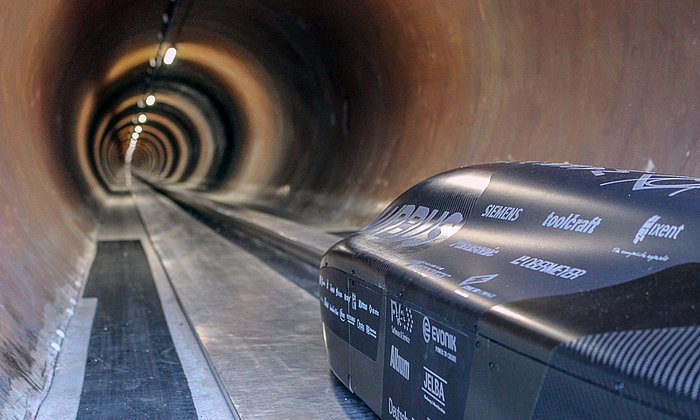Europe's first certified full scale Hyperloop test track opens
TUM Hyperloop begins test operations
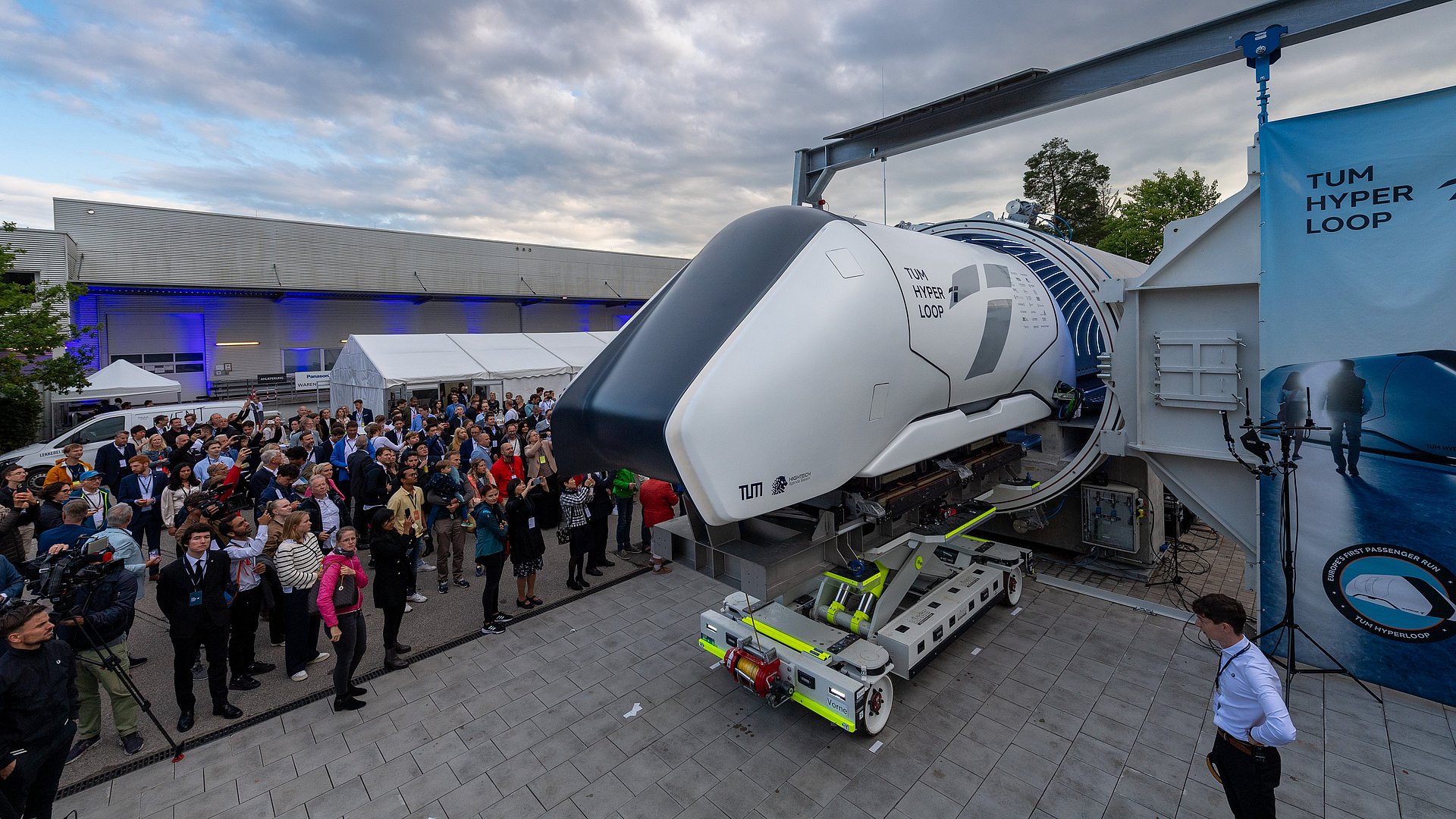
Transporting passengers from point A to point B at more than 800 kilometers per hour: A lofty goal, which researchers at TUM can now pursue under the best of conditions. The TUM Hyperloop research group was founded in 2020 from a former student initiative. Since then, the groups has been working on a new, low-emission and, more than anything, faster means of travel. After less than a year in construction, the 24-meter-long test track now consists of a concrete vacuum tube, a passenger pod and the subsystems necessary for operations. All the components are ready for empirical research on Hyperloop technology. "Now we're able to show the public what future Hyperloop systems could look like. The transition from model scale to realistic dimensions and in particular Europe's first passenger test under vacuum conditions are important milestones on the road to scaling up the technology and testing it with longer segments," says Gabriele Semino, Project Lead at TUM Hyperloop.
First test with passengers already successful
The researchers have already been able to demonstrate that the TUM Hyperloop test segment is fully functional in an initial test run. The first trip with a passenger pod in vacuum inside the testing tube took place on July 10, 2023. Before operation with passengers could begin, the demonstrator had to be certified for passenger carriage by the technical inspection agency TÜV Süd. Inspection by the agency ensures safe operation of the equipment and paves the way for TUM Hyperloop to test its systems thoroughly.
Passenger pod and concrete tube are tested
The TUM Hyperloop demonstrator consists of three separate elements. The most visible part is the test track itself, a 24-meter-long concrete tube. About four meters in diameter, it features a boarding platform and also includes parts of the technical equipment necessary for levitating and driving the passenger pod. The pod has a comfortable, fully functional interior which will enable a pleasant trip for up to five passengers. The passenger module has been optimized for operation in a vacuum. The third part of the unit is the operation control center, which controls the demonstrator and also contains components such as a high-performance vacuum pump. "As a completely functional Hyperloop segment, our system lets us specifically investigate the drive, the technical levitation system and the pod's behavior in a vacuum, as well as safety factors," says Project Lead Semino.
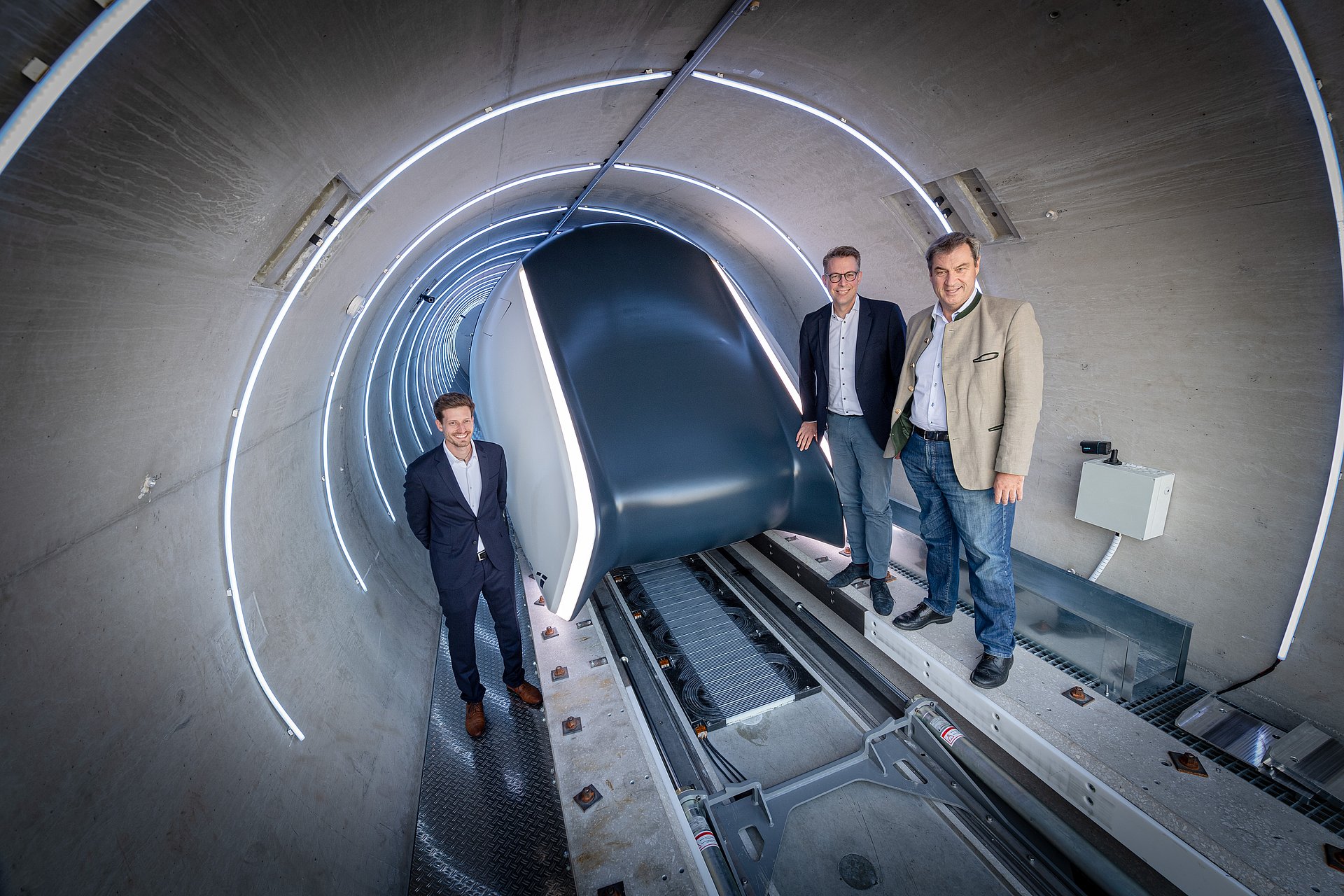
Success in international competitions
Dr. Markus Söder, Bavarian Minister-President, says: "I have great respect for this kind of spirit! These young students have turned an inspiring idea into a strong statement about the art of engineering and about the future. Science makes our world better: Bavaria is therefore investing over five billion euros in research and technology as part of the Hightech Agenda. In addition to der Hyperloop test track, Europe's largest faculty for aviation and astronautics is also currently forming in Ottobrunn. The future is taking shape here."
Markus Blume, Bavarian Minister of Science and the Arts, says: "The future of mobility begins in Bavaria: Europe's first full-scale Hyperloop test segment is ready to start up in the State of Bavaria. Beginning with a length of 24 meters, today is the first step into a new era. The vision: sustainable, ultra-fast, safe transportation. The realization: Made in Bavaria at TUM. The special aspect: The Hyperloop began as an initiative formed by our students; Today the project is a unique research project and part of the Hightech Agenda Bavaria. Driven by a passion for the future and for technology, talented young individuals are turning Science Fiction into reality and setting real, new standards. We're incredibly proud of the TUM Hyperloop team. Not only have they successfully implemented the test track, they've also already won the Elon Musk's Hyperloop competition four times."
Dr. Alexander Braun, TUM Vice-President for Digitalization and IT Systems, says: "The Hyperloop project is like a prototype of the TUM approach: Think in visionary terms, discuss ideas productively, bring together people from various different subject areas, strive relentlessly for solutions and, in doing so, bring technology to the highest levels. The fantastic thing is that the foundation was laid by a group of students which has already won several international competitions. Thanks to the support of the Hightech Agenda Bavaria, the Hyperloop development activities have now been elevated to the level of a major research program."
From city to city with Hyperloop
Hyperloop systems pursue the vision of moving transport pods and passenger pods through tubes in an almost complete vacuum. The vacuum makes it possible for the pods to move with virtually no aerodynamic drag, making enormous speeds a possibility. TUM Hyperloop is concentrating on the utilization of the technology as a sustainable mobility concept for rapid passenger transport.
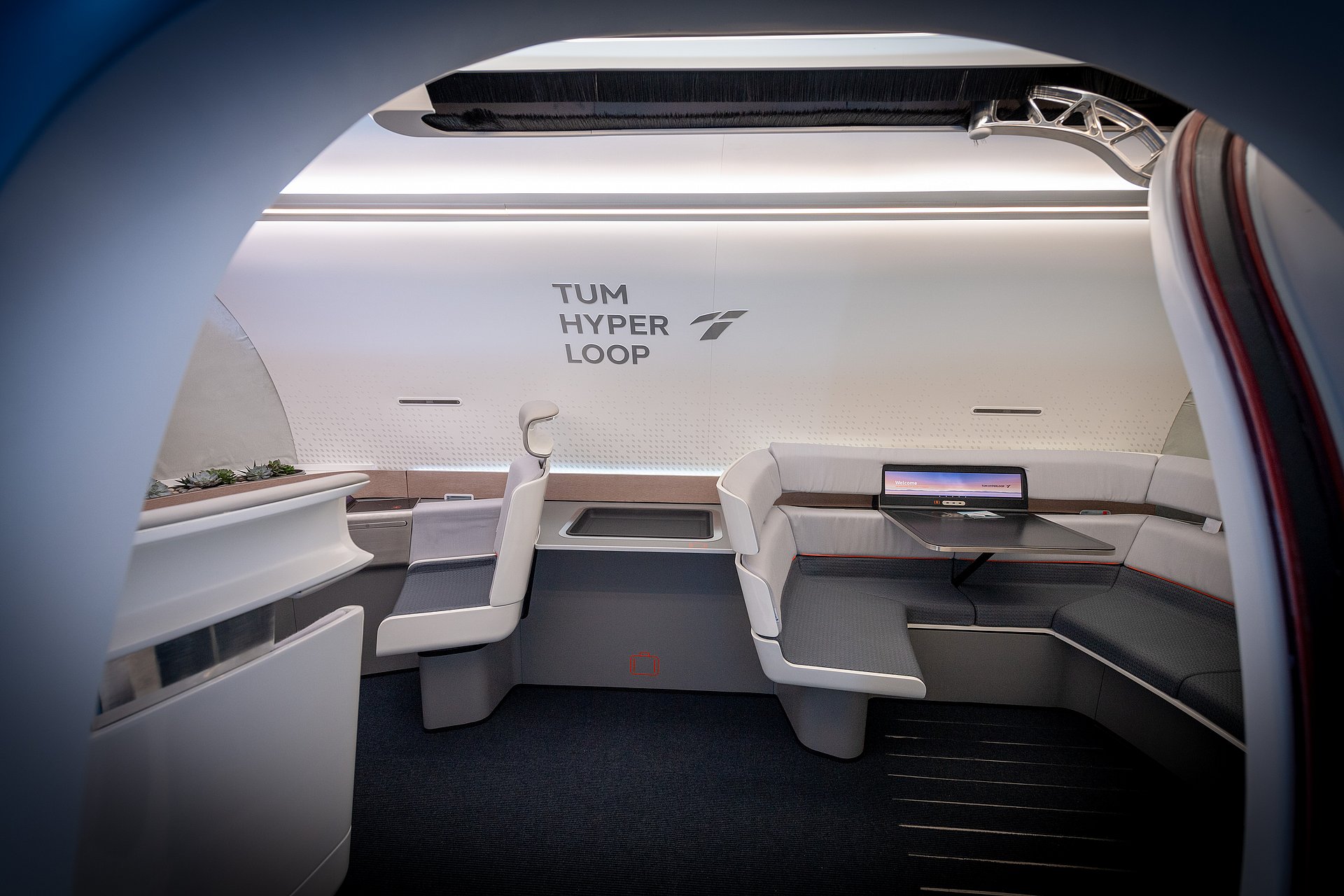
Hyperloop is a part of the Hightech Agenda Bavaria
The TUM Hyperloop program has been a part of the Hightech Agenda Bavaria since 2020 and is thus funded in part by the State of Bavaria. As part of the Department of Aerospace and Geodesy at the TUM School of Engineering and Design, TUM Hyperloop can rely on extensive expertise and resources. A large number of TUM professorships and students are involved in the project, as are external partners.
Since as early as 2015 TUM has been working towards the vision of making mobility more sustainable and in particular faster than it has been in the past. The student initiative founded at the time was created in order to participate in the SpaceX Hyperloop Pod competitions, which Elon Musk's space travel company had launched. The TUM team took first place in all four competitions. Based on this validation, the student project became what is now the TUM Hyperloop research group. The objective of the project is to construct a reference segment for the Hyperloop system across several development steps by the end of the decade, where passengers can be transported at speeds topping 800 kilometers per hour.
Pictures for editorial use: https://mediatum.ub.tum.de/1717262
TUM Hyperloop: https://tumhyperloop.com/
The Aerospace and Geodesy (ASG) Department was founded in spring 2018 as the 15th faculty of the Technical University of Munich and later became part of the TUM School of Engineering and Design. Its topics range from new transport systems to communication and satellite technology and even planetary observation and surveying: Interaction with the geodetic disciplines turns aviation and astronautics into a "Mission Earth". The Department is headquartered in Ottobrunn/Taufkirchen near Munich. Many of the Hyperloop program's research fields can also be found in aviation and astronautics, resulting in the generation of positive synergy effects.
Technical University of Munich
Corporate Communications Center
- Andreas Huber
- huber.a@tum.de
- presse@tum.de
- Teamwebsite
Contacts to this article:
Gabriele Semino
Technical University of Munich (TUM)
Project lead TUM Hyperloop
gabriele.semino@tum.de
